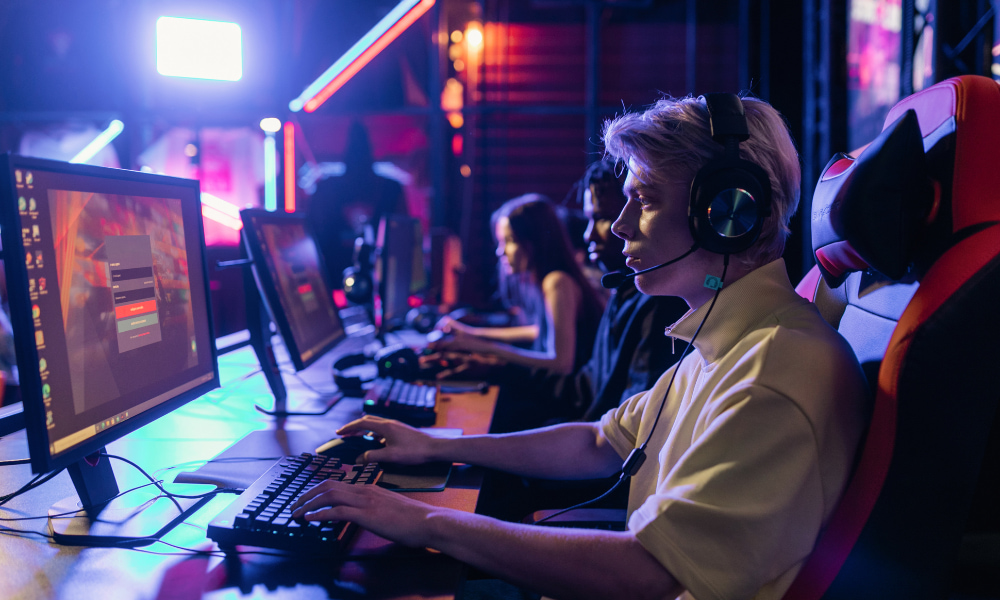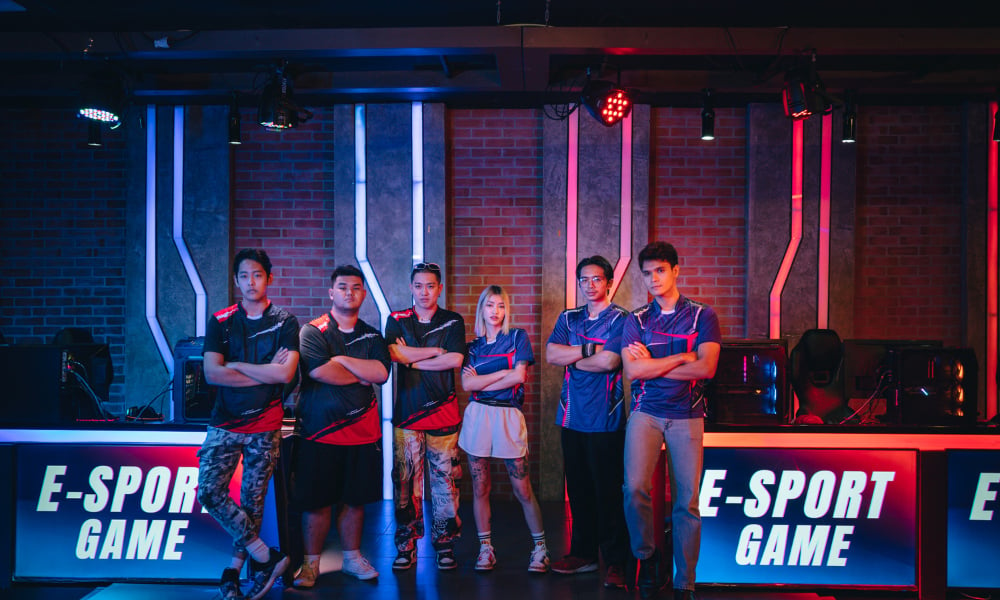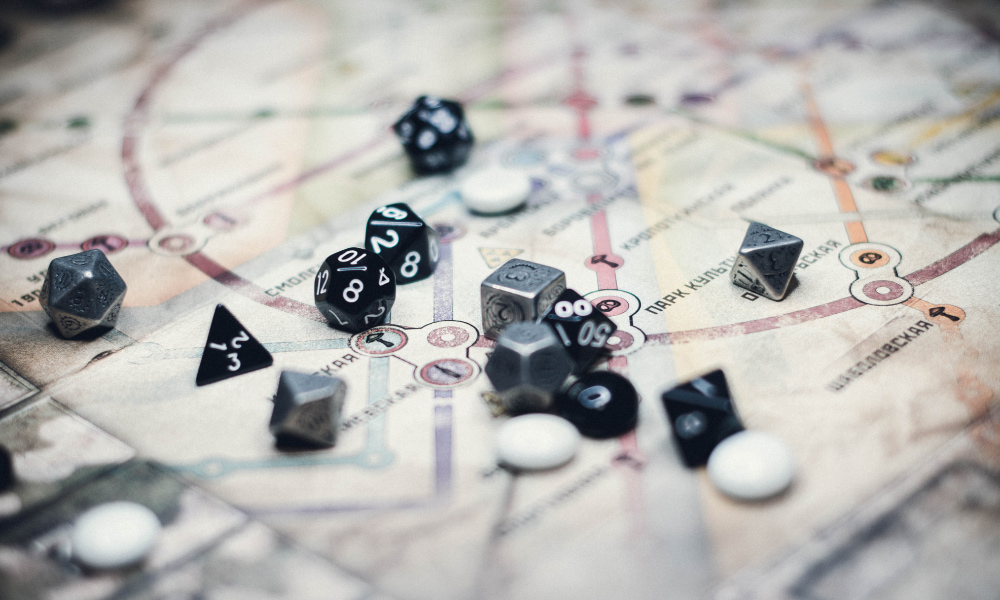eSports
The Evolution of eSports: From Hobby to Global Profession
Dive into the world of eSports and follow its journey from small group hobby to thriving global profession. Learn how mobile games, tournaments, and new roles are changing gaming forever.
Advertisement

Booting up a favorite game and competing against friends once felt like downtime, but now, that same drive for competition has shaped the evolution of esports. With every new tournament, mobile game update, and leaderboard, gaming’s social roots have flourished into a rich, professional landscape.
Esports matters today because it combines passion and practical ambition. Rising from humble LAN parties and bedroom scenes, the field now supports influential careers. Players, fans, and brands all find opportunity in the ongoing evolution of esports, as digital and mobile platforms constantly deliver new competitive experiences.
If you’ve ever wondered how gaming transformed from a casual diversion to a worldwide professional endeavor, you’re in the right place. This article uses real scenarios, actionable steps, and tips to guide your understanding of esports’ remarkable journey.
Tracking Gaming’s Shift: Pop Culture to Professional Arena
Anyone eager to see changes firsthand will find concrete milestones in the evolution of esports. This section maps key events, game releases, and shifting community attitudes.
Studying these developments helps clarify what sets today’s competitive gaming apart—showing exactly when and how mobile and classic games gained recognition as viable global professions.
Early LAN Parties and Community Roots
Players who hauled PCs to local LANs in the late 1990s showed unmistakable dedication. They practiced teamwork, shared tips, and realized games could unite people in unique settings.
Conversation at those early events often sounded like, “You grab support, I’ll handle attack—let’s surprise them.” Strategy and pride fostered a spirit that persists in the evolution of esports.
Organizers eventually set up amateur competitions with prize pools—small by today’s standards, but electrifying for participants. The atmosphere, not the rewards, drove commitment and signaled esports’ broader potential.
From Garages to Global Arenas: Key Game Titles
Specific games transformed the landscape. StarCraft, Counter-Strike, and League of Legends each offered new dimensions—tactics, speed, or accessible team play—which kept crowds coming back.
Global launches allowed for simultaneous competitions. Friends in New York could compete against teams in Seoul. These connections gave mobile gaming events, such as Clash Royale tournaments, a real sense of scope and urgency.
Each title that broke through did so because fans could see themselves mastering its mechanics. This genuine identification is vital to the evolution of esports, and today’s mobile-first games focus on easy onboarding and social play for exactly this reason.
| Era | Main Platforms | Key Game Examples | Takeaway for Players |
|---|---|---|---|
| Late 1990s | PC LAN | StarCraft, Quake | Practice locally and build skills—friendships fuel ambition |
| Early 2000s | Online PC | Counter-Strike, Warcraft III | Join online ladders to face global competition |
| 2010–2015 | PC, consoles | League of Legends, Dota 2 | Build a team, watch replays to improve |
| 2016–2020 | Mobile devices | Clash Royale, PUBG Mobile | Set play schedules, use in-game analysis tools |
| 2021 and beyond | Cloud, cross-platform | Valorant, Mobile Legends | Focus on multi-device skills and build a brand presence |
Growing a Pro eSports Career: Real Steps for Gamers
Launching a professional gaming journey in the evolution of esports requires practical milestones. Players looking to transition from hobbyist to paid competitor should follow concrete paths and self-assessment processes.
Following clear steps, outlined below, can prevent burnout and increase chances for success, whether the goal is sponsorship or tournament success in mobile gaming ecosystems.
Setting Up a Rig That Works
Reliable gear is at the core of any career in the evolution of esports. A player who invests in a responsive phone, high-refresh monitor, and quality audio always has the edge.
Configuring touch controls to personal preference saves time. Tapping precisely, using a controller for longer sessions, or optimizing graphics helps avoid distractions and lets you focus on play.
- Choose a gaming phone with proven battery life so you can train longer between charges—avoid interruptions by charging overnight and closing background apps.
- Set custom control layouts in your title’s settings. Quick access to top moves reduces mis-steps—test in practice mode until comfort is automatic.
- Join device-specific online groups to get troubleshooting scripts fast. Someone’s “Swap Wi-Fi channel, then reboot” advice often fixes mobile lag for good.
- Keep a wrist rest for marathon sessions to support hand health. A healthy body means more play and less downtime.
- Protect devices in travel cases. You’ll avoid show delays and network issues caused by damage during commutes or overseas flights.
A custom setup also looks professional—sponsors notice readiness and commitment, which accelerates opportunities in the evolution of esports for mobile-first talent.
Building a Consistent Training Schedule
Consistency matters more than marathon streams. Setting fixed daily practice windows helps players avoid burnout and monitor real improvement in mobile gaming titles.
Use calendar notifications for daily tournaments, scrimmages, and solo queuing. Players ready at the same time as teammates always have an advantage on the competitive ladder.
- Create a visible wall planner and fill it with practice slots. Seeing routines boosts motivation and helps track missed sessions for review later.
- Warm up with aim trainers for mobile shooters. Five minutes of touch-target practice saves precious seconds in real matches.
- End every session with replay review on mute. Noting small mistakes without distraction cements better habits.
- Schedule coaching sessions with veteran players weekly to pinpoint one improvement area rather than chasing every tip.
- Rest every third day to avoid muscle strain and mental fatigue—maintaining balance extends careers in the evolution of esports.
Each tiny change in routine, when sustained, leads to compounding results for competitive gamers growing their presence year by year.
Spotlight on Mobile Gaming: A Driver in Global eSports
Mobile gaming stands as the fastest-expanding sector in the evolution of esports. Players new to the scene benefit from actionable examples and tailored advice unique to smartphones and tablets.
This section details evidence-based approaches to climbing leaderboards and participating in tournament ecosystems with mobile-first strategies.
Mobile Titles Fuel Spectator Growth
Games like Free Fire and Mobile Legends showcase how touch controls and fast match cycles keep fans engaged at home or on public transport. Updates arrive quickly, so spectators become active participants.
When a streamer in Los Angeles demonstrates a new build, viewers copy it within hours, leading to a rapid meta evolution of esports across the globe. This community speed makes the mobile platform uniquely interactive.
Organizers now host tournaments during peak commute times, drawing in record audiences. A reader can mirror this by creating watch parties timed to big online matches, building a local fan club atmosphere instantly.
Leveraging Microtransactions for Practice and Teamplay
Microtransactions give players a low-cost path to top-tier gear or cosmetics. Spending $2 on a controller skin or one-off tournament pass fosters investment and signals your seriousness to fellow players in the evolution of esports.
Teams that share resources, such as using pooled currency for in-game events, grow stronger. If “Let’s gift each other a loot box this week” comes up in chat, it both improves morale and performance.
Managing spending by setting strict monthly caps avoids impulse buys and focuses funding on competitions or training instead. A screenshot of last month’s purchases can prompt helpful reflection before each new download.
Community Roles: Streamers, Coaches, and Brand Ambassadors
Expanding beyond players, the evolution of esports now depends on a range of support roles. Streamers, analysts, coaches, and ambassadors create value while helping teams and brands reach new audiences in both classic and mobile gaming sectors.
Coaches Build Strategies and Monitor Player Growth
Effective coaching centers on practical drills. For instance, a coach running three back-to-back scrims focuses on adapting tactics, not just increasing play hours.
Anthropomorphizing the competition (referring to them as “the patient lurker” or “the aggressive opener”) makes strategy lessons more memorable during debriefs. Concrete naming sticks longer than abstract advice in the evolution of esports.
Clear visual cues—like replays marked with arrows and color-coded mistake notations—allow for actionable feedback that can be immediately implemented by mobile gamers looking to level up.
Streamers Shape Esports Culture and Fandom
Streamers wield direct influence over playstyles and fan engagement. When a streamer pivots from tactical shooters to a new mobile title, the fan base follows quickly. Copycat builds and challenge events arise within days.
Mobile gamers who announce goals live—such as “I’m going for Legend rank and will coach viewers every Friday at 8 pm EST”—showcase their process. This transparency encourages others in the evolution of esports to join and emulate best practices.
Partnerships with sponsors revolve around authenticity and honest gameplay, attracting audiences that are more likely to try new mobile games or purchase featured hardware, further reinforcing industry growth.
Media Exposure: Turning Hobbyist Play Into Mainstream Stardom
Media visibility converts niche skills into high-value opportunities for mobile esports stars. Coverage motivates new players to try professional routes, while established names gain broader recognition.
Sponsorships Anchor Professional Advancement
Reliable sponsorship scripts include “Thanks to Brand X for supporting today’s stream—let’s break down new gameplay updates together.” This mix of gratitude and actionable guidance builds lasting relationships that benefit viewers.
Agencies look specifically for players who can host Q&A sessions, review new hardware, or join mainstream interviews, providing detailed value for their followers in the evolution of esports.
Negotiating fair rates and maintaining agreed protocols ensure sponsors stay engaged. Players, in turn, gain security and resources for international travel, custom gear, or high-stakes tournaments on mobile.
Broadcasting and News Impact Long-Term Reputation
Esports features with strong storytelling help fans follow rising athletes. A simple on-camera script—“I started as a rookie in mobile shooters and now I coach two youth teams”—creates instant connection with aspiring pros and young audiences.
Consistent press coverage raises visibility for both players and entire regions. Reporters may focus on emerging local mobile leagues or growing gender diversity, amplifying what makes the evolution of esports so inclusive and dynamic.
Appearing in media archives cements one’s place in esports history, opening doors for legacy coaching, authoring game guides, or creating original content that inspires next-generation competitors.
Rule Changes, Patch Cycles, and Competitive Balance
Regular rules and meta shifts define the rhythm and strategy of the contemporary evolution of esports. Players who adapt quickly gain ranking and professional momentum, while slow adopters risk losing their standing.
Incorporating Patch Changes Without Losing Ground
Every balance update means learning new scripts. The competitive player reads patch notes, watches beta streams, and tests changes daily. The phrase “Try the new support buff in five matches—then tweak your approach” is commonplace in evolving mobile scenes.
Top teams dedicate one weekly scrim purely to discovering the impact of new mechanics or bug fixes. Shared Google Docs with annotated results ensure everyone on the roster can adapt strategies instantly.
Being proactive, rather than reactive, with changes ensures teams rise through rankings and maintain broad appeal for both fans and future sponsors.
Community Feedback Shapes Official Rulebooks
Developers openly request feedback on balance issues or unfair matchups. If a particular hero dominates mobile tournaments, developers roll out quick surveys and hotfixes based on real replay data.
Forums and Discord chats fill with practical suggestions: “Limit this power-up” or “Reduce round timers by 30 seconds for mobile.” Decision-makers in the evolution of esports adopt these adjustments promptly for future ranked ladders.
Actionable outcomes include fairer, more watchable matches, which grow the scene and draw new talent eager for balanced and engaging play each season.
Preparing for the Next Decade of eSports Growth
To thrive as the evolution of esports continues, players and fans must watch trends, test new strategies, and nurture positive community habits. Recognizing what works and what needs reinvention is only part of this preparation.
Staying curious and connected to event organizers and device developers leads to direct influence. “Suggest rule tweaks early,” a current admin notes, “and you’ll spot changes before the rest do.” This habit pays dividends in safe and sustainable scene growth.
The Ongoing Evolution of eSports and Its Lasting Impact
Mobile gaming’s explosion into the evolution of esports has changed not just careers, but cultures and communities. Real examples—media partnerships, groundbreaking mobile tournaments, and sustained coaching relationships—prove that gaming is a global force with tangible rewards.
Each role—player, streamer, analyst, coach—delivers meaningful progress. Concrete actions, teamwork, and innovative use of technology blend to advance the field with every event and patch cycle. Every aspect of the evolution of esports connects individuals and upskills communities.
The next leap for esports lies in deeper mobile adoption, new hybrid tournament models, and even wider recognition as a legitimate career. Players, mentors, and fans have the tools to shape outcomes and legacy—one game, one match, and one partnership at a time.

The Ultimate Guide to Starting a Career in eSports
Building an eSports career requires setting clear priorities, refining skills, and engaging with the community for long-term success.
Trending Topics

The Best Mobile Games to Play Offline Anytime
Discover reliable offline mobile games for uninterrupted fun, whether commuting or traveling. Enjoy smooth gameplay, no internet needed.
Keep Reading
How Mobile Games Are Taking Over the Global Market
The mobile gaming market is growing fast, adapting to modern lifestyles with quick, engaging experiences for players everywhere.
Keep Reading
The 5 Biggest eSports Tournaments You Need to Know
eSports tournaments like The International and Fortnite World Cup define the scene with huge prizes, global fans, and epic gameplay.
Keep ReadingYou may also like

The Ultimate Guide to Starting a Career in eSports
Building an eSports career requires setting clear priorities, refining skills, and engaging with the community for long-term success.
Keep Reading
Mobile Adventure Games: Find the Perfect World to Explore on Your Phone
Explore immersive worlds on your phone with mobile adventure games! Follow tips for picking, playing, and mastering your next adventure.
Keep Reading
How to Level Up Quickly in RPG Games: Proven Methods for Fast Progress
Level up RPG games faster by setting goals, tracking progress, and focusing on high-yield tasks. Maximize rewards and avoid burnout!
Keep Reading